#interactivedesign
Explore tagged Tumblr posts
Text
Smart QR Codes: The Future of Digital Intelligence
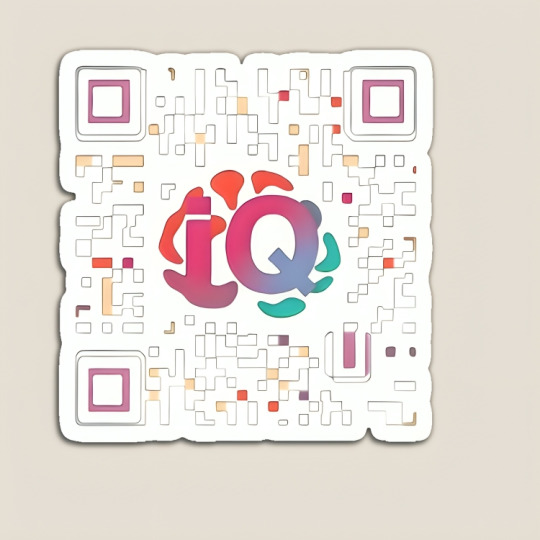
#QRCode#IQDesign#SmartQR#CreativeDesign#ColorfulQR#TechStyle#InnovativeDesign#QRStyle#TechFashion#DigitalArt#FunctionalArt#TShirtDesign#IQCode#InteractiveDesign#CustomQR#GraphicTees#CustomApparel#MerchLife#PrintOnDemand#DesignInspiration#FashionDesign#CreativeTees#ApparelDesign#CustomClothing#StreetwearDesign#DesignersOfInstagram#UniqueTees#ClothingBrand#FashionArt#StyleInspiration
2 notes
·
View notes
Text

#3DVisualization#InteractiveDesign#3DModeling#ProductDesign#ArchitectureInnovation#VirtualReality#AugmentedReality#RealTimeRendering#AIinDesign#MarketingInnovation
2 notes
·
View notes
Text
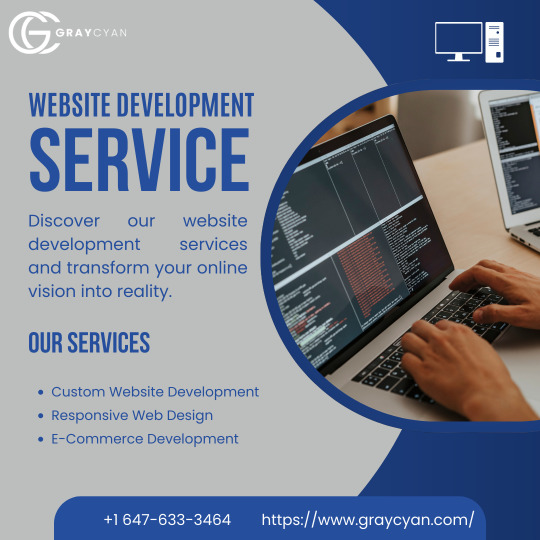
#WebDesign#WebsiteDesign#DigitalDesign#OnlineDesign#CreativeDesign#ResponsiveDesign#ModernDesign#UserFriendlyDesign#VisualDesign#InteractiveDesign#UIUXDesign#GraphicDesign#WebDevelopment#DesignSolutions#DigitalCrafting#Mississauga#Ontario#Toronto#Canada#Ottawa#Calgary#Montreal#Vancouver#Edmonton
2 notes
·
View notes
Text
How Interactive Design Creates Meaningful Digital Experiences

Today’s users expect more than just static web pages—they crave experiences. In the digital world, grabbing attention isn’t just about content, it’s about how that content interacts with users. That’s where Interactive Design steps in.
It’s not a luxury anymore—it’s a necessity for those wanting to stand out in a crowded digital landscape.
What Is Interactive Design?
Interactive Design is the process of crafting digital environments that encourage user engagement. It turns a flat experience into an active journey, giving users control, feedback, and purpose as they explore your content. Whether it’s a subtle button animation, a swipe feature, or a dynamic quiz—these touches influence how people connect with your site.
Rather than telling users what to do, interactive elements guide and respond. This creates a sense of collaboration and clarity between the user and the interface.
Why It Matters More Than Ever
We’ve all visited a website that felt overwhelming—or worse, forgettable. When user interaction is missing, so is the emotional connection. Interactive design enhances:
user flow
content discovery
information retention
accessibility
time-on-site
user confidence
From responsive navigation menus to scroll-based animation, these small changes offer big results.
Sites that focus on these principles not only improve user satisfaction but also perform better on search engines.
EEAT & SEO: A Natural Fit
Following Google’s EEAT principles—Experience, Expertise, Authoritativeness, and Trustworthiness—is no longer optional. It’s essential. Interactive design supports each element by:
Showing Experience through user-tested functionality.
Demonstrating Expertise via seamless navigation and clarity.
Earning Authoritativeness by providing content that’s easy to engage with.
Building Trustworthiness by being responsive and clear in every interaction.
The more natural your site feels, the more Google sees it as helpful. And that helps with indexing, ranking, and staying visible.
It’s Not Just for Designers
You don’t need to be a developer to appreciate the benefits of interaction. Whether you're running a blog, an e-commerce site, or an online portfolio, adding simple elements—like hover effects or feedback forms—can increase engagement and time on page.
Start small: Add a clickable FAQ section, a live poll, or a sliding carousel for your latest posts.
These enhancements encourage users to explore your content deeper, which naturally boosts on-site behavior metrics—another SEO signal.
Looking Ahead
The internet is shifting. Users now expect faster, smarter, and more engaging platforms. Websites that deliver this through Interactive Design will not only meet those expectations but exceed them.
#InteractiveDesign#UXDesign#WebDesignTips#DigitalExperience#UserEngagement#EEAT#SEOcontent#DesignMatters#HumanCenteredDesign
0 notes
Text
Exploring 3D Design and Its Impact on Graphic Design
In recent years, 3D design has made a significant impact on graphic design. It’s no longer just about flat images; designers are now incorporating depth, realism, and interactivity into their creations. This evolution has opened up new possibilities, pushing the boundaries of creativity and visual storytelling.

1. The Rise of 3D Design
3D design has grown from being a niche skill to a mainstream trend in the graphic design industry. With advancements in software such as Blender, Cinema 4D, and Autodesk Maya, creating three-dimensional designs has become more accessible to graphics designers. These tools have allowed designers to experiment with complex forms and structures, resulting in eye-catching visuals that were once unimaginable.
2. Enhancing User Experience
Incorporating 3D elements into design can significantly improve user experience (UX). 3D designs can be used to create more interactive websites, product visualizations, and immersive marketing materials. For example, by adding 3D models of products on websites, customers can rotate and zoom in to get a better understanding of the product. This interactivity boosts engagement and enhances the overall user experience.
3. Applications of 3D Design in Graphic Design
There are various applications of 3D design within graphic design, including:
Product Packaging Design: 3D renders of packaging allow clients to visualize the end result before production.
Branding: 3D logos and brand marks create a more memorable and dynamic identity.
Advertising: 3D elements are used in ads to grab attention and add an extra layer of creativity, making campaigns stand out.
Web Design: With the use of 3D graphics, websites become more interactive and visually striking, improving the overall appeal.
4. The Future of 3D in Graphic Design
As technology continues to evolve, 3D design will undoubtedly play an even larger role in graphic design. With the integration of virtual reality (VR) and augmented reality (AR), graphics designers are presented with exciting opportunities to create fully immersive experiences that merge digital and physical worlds.
Designs will move from simple 3D elements to fully immersive environments, allowing users to interact in more meaningful ways. This could change the way we experience branding, advertising, and digital content altogether.
The integration of 3D design into graphic design is more than just a trend—it’s a shift in how we create and consume visual content. As continue to explore new techniques, the boundaries of what’s possible in design will continue to expand. By embracing 3D design, designers can stay ahead of the curve and create compelling, engaging, and visually stunning work.
#3DDesign#GraphicDesign#UserExperience#InteractiveDesign#ProductDesign#Branding#VisualStorytelling#CreativeInnovation
1 note
·
View note
Text
Platform Design and Development of Digital Memory Traces
Platform Design and Development of Digital Memory Traces - Applying our use case driven approach, we designed and built the Digital Memory Traces platform. It offers functionalities to support the definition and development of service ideas by addressing media collection and use as well as social interactions. The definition of different media types and functionalities to participate and engage is key to targeting a wide user community. The media types used during intake and developed throughout the project emanate from our model. Applying this model, we identified the following formats: Story, Memory Fragment, Reflection, Statement, and Photo. To capture the experiences of sharing memories, we introduced an additional format: Experience. Our platform applies storytelling and encourages a close look and social interaction, which is solely created in a co-creation manner.

The discussion in the preceding pages has confirmed the need for web-based applications that facilitate participation, creation, sharing, and co-creation of personal content-based information services. We refer to these web-based applications as media-sharing platforms. The literature focused on the micro level – the individual creating, capturing, storing, and sharing personal content intelligence. Business services need stories, with people in them, to engage, interact, and motivate clients. Therefore, at a macro level, we need to rethink how to facilitate mass creation, sharing, and embedding of stories, photo collections, reflections, goals, and 'memories'.
User Interface Design
The focus is on students and teachers-developers, thus promoting change in teaching and learning, contributing to improving the learning process. The user can access DMT, using the functionalities that allow exploring the traces, visualizing results obtained from parameters defined in a trace, starting the configuration of a trace, and obtaining snippets using the parameter estimation process. Snippets are pieces of multimedia that the machine learning algorithm selects for human annotation in order to help it learn how to spot a specific category. They include segments of videos and are painful interactive processes of data collection where human annotation is required. At the moment, the application does not have the used data stored in an adequate way, constituting future work. User access to the application, except for adding new algorithms and/or editing estimates, is conditioned on authorization.
Based on the study of similar applications and user experience design principles, it explains how the visual design should be, underlining the importance of brevity, or the user's ability to interact with less content, making extensive use of the horizontal scroll and load more. This is very useful for educational settings, where it is difficult for a person to interact with a great amount of simultaneous information. It suggests research on the design of data quality measures with an ergonomic approach and using them in the user interface, between machine learning researchers and the audience they seek to serve, in the context of machine learning for video data. Machine learning research has been primarily concerned with accuracy, or minimizing the difference between algorithm and human labeling assignments. They suggest a positive approach, assuming that they can design sampling schemes, factors that affect performance, and conditions that will improve sample annotation compliance.
Technical Architecture
The platform can be seen as two different layers. The lowest one is the storage, and the upper one joins storage and preservation. Under the preservation layer, creation and some specific retrieval actions are added. This approach finishes the basic concept framework of the proposed platform. Fine-tuning of the technical architecture incorporates a number of specific requirements for the platform. The first basic requirement is the digital preservation of creative, intellectual human activities that include the representation of these activities in a large number of different ways. There are basically two approaches to cope with this problem: the use of any additional metadata, which helps to describe every memory and its meaning in a highly accurate way, and the development of memory infrastructures that benefit from information redundancy and a high degree of tolerance even when part of this metadata is missing, noisy, or just wrong. These may be added to the platform as they become stable and compatible, provided they satisfy platform flexibility requirements.
In addition, another requirement must be added to allow for easy and highly intuitive access to the platform's contents. However, the search engines at this level are limited to exploring contents, not meaning and interpretation. For the same heavy computer costs, analyzing abstract contents is expected to be supported by professional expert systems available in a third-party environment as plugins. This will bring additional difficulties to the integration task, since some memory contents may be linked to specific professional analyses providing specific meaning. Moreover, the application of these professional expert systems is just complementary with respect to the memory contents distribution and availability. For these basic needs, an easy-to-access service layer is provided. It is aimed at replacing standard repository accesses with plug-in explorative services. These professional services access the data storage level using both stored memory contents and an extended semantic metadata tool and data infrastructure.
User Experience Considerations
Consideration of the user experience during the design of DMT was an ongoing and underlying theme. Trustworthiness develops as a more understated and latent aspect of educational technology. We understand our technology is a means that students can use for learning and that this raises the issue of how to design technology so that our users can trust it. Trustworthiness is related to our comprehension of the integrity of the information, and it is important because students rely on the technology to deliver accurate representations. A trustworthy system does not make itself known; it is something that is achieved through human-computer interaction. Trustworthiness is related to prolonged, active, and intense mental activities, motivational inertia, and satisfaction. The contributions to trustworthiness of these shortcuts are as follows: if a user has a good experience when they use an information system, then the user will be confident in the capabilities of the system. This is true whatever the design philosophy, and if certain user expectations are not met, the level to which a user trusts the system decreases.
Researchers must draw on standard methods and guidelines for keeping the users' interest; otherwise, it can lead to the loss of the users' trust in using the system or having faith in the choices the system has made for them. Factors to be taken into account involve component arrangement and format, timing of programs, upload time, protocol consistency, high quality, maintaining the aesthetics of design, minimizing cognitive overload, and minimizing human effort. Overall, taking these factors into consideration enhances the attractiveness and comprehension of trustworthiness for the user, which can then result in the user being confident when they use a decision support system, and it can also provide satisfaction to their needs. There will be trust in the system and consequently satisfaction. However, an undersupported, low-readiness system is just the opposite. The user's levels of trust, confidence, and satisfaction will drop, and both goals and the potential that technology can afford decrease. The alliances that have been built with the repositories and their responses to the study are perceived as ongoing and not just for the students.
Within this context, the trust issue is actually about the confidence students have. It is not about the repository or systems per se; ontologies, in fact, play a key role in this. Cognitive research suggests that finding confidence in information actually matches up to people trusting their own; in the end, it is our own minds that we need to trust, and it is our minds that, in part, are being enhanced by the technology as related to the intended learning outcomes. It is not just a question of aiding memory, but a question of the user having control and accountability, knowing what happened, and being allowed to verify as much as is possible to ensure that a trace of memory was achieved. Indeed, a human agent can be created to establish knowledge by interpreting and/or generating information from the user; therefore, the role of the repository enters into a cognitive partnership. Such an approach grants the student a sense of security and recognition for the real effort placed into creative memory work. Such an infusion of trust factors is a strong link to the achievement of high cognitive performance awareness. These findings, when explored during the design of eiron, not only shape the design themselves but also foster a sense of trust to a degree as issues are anticipated and dealt with.
#PlatformDesign#DigitalMemoryTraces#TechInnovation#UserExperience#UXDesign#AppDevelopment#WebDevelopment#DigitalDesign#MemoryTech#SoftwareDevelopment#DesignThinking#DigitalPlatforms#MemoryTrace#TechnologyTrends#FutureOfUX#InteractiveDesign#DataIntegration#UserEngagement#DesignInTech
1 note
·
View note
Text
🌟 Transform Your Space with LED Interactive Projection🌟
Looking for a creative way to enhance your commercial space? LED interactive projection brings a dynamic and engaging experience to staircases, restaurants, and more! 🚀🎨
✅ Staircases – Turn ordinary steps into mesmerizing digital art or interactive pathways. Perfect for malls, hotels, and entertainment venues! 🏙️✨ ✅ Restaurants – Create immersive dining experiences with animated tabletops, themed visuals, or interactive menus. 🍽️🌟
💡 Whether for branding, entertainment, or customer engagement, LED projection is the future of interactive design!
#AsianDavinci#LEDProjection#InteractiveDesign#SmartSpaces#RestaurantTech#RetailInnovation#ImmersiveExperience
0 notes
Text
Visit Iconadda to view a wide collection of free interface
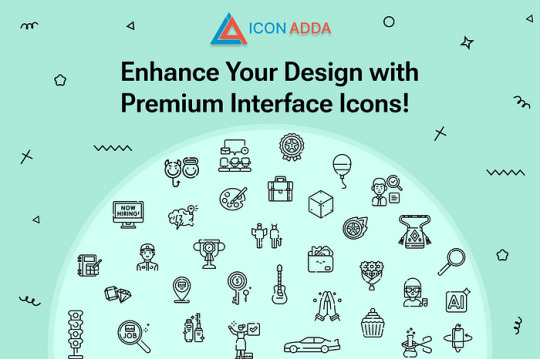
The icons are required to enhance the user interface, which sites, apps and designs are more visually appealing and intuitive. Designers, developers and ads can download high quality images for free for an extended library of free icons of any type of areas.Whether you need a PNG or SVG icon, our site provides a simple download and use experience for your applications.
Why choose IconAdda free icon? Better design: Each of our icons is designed to maintain a sophisticated look. Many formats: Icons are available for download in SVG, PNG and some other formats, making them flexible for different types of use cases. Totally free: avail yourself of a vast collection of icons without border or license fee. Simple to use: Simply download them and bring them into your projects right away.
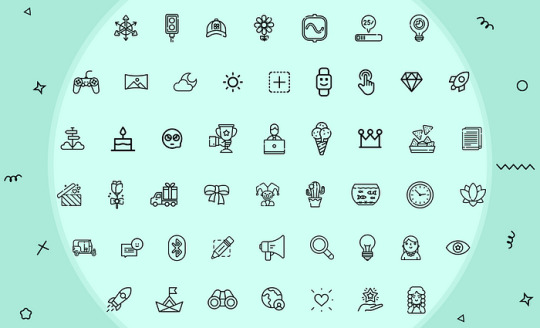
5. Medical and healthcare icon This set of icons consists of symbols of hospitals, physicians, medical and healthcare and is designed to be used on health services, applications and digital platforms. 6. Messaging and communication icon These icons, such as e-mail symbols, voice bubbles and information, are best suited for chat applications, e-mail services and customer support platforms. 7. Symbols for travel and tourism With a symbol of hotels, monuments, airplanes and adventure-related symbols, this trip is best suited for businesses and blogs.
AND MANY MORE CATEGORIES
How to use IconAdda to download free icons Iconadda is simple to use! Simply browse our categories, choose the free icon you require, choose the format you prefer (SVG, PNG and more), and download them straight away.
Design icons to suit your requirements All our SVG icons are safe to eat, so you can alter colors, score them or alter them to suit the demands of your project. Our symbols can be tailored to your style, whatever you do with a presentation, mobile app or website.
Conclusion For all those looking for a large choice of free interface icons on a variety of fields, Iconadda is here. Improve your design work by hundreds of quality SVG, PNG and vector icons at ease. Get our free icon and increase your designs now by starting your search.
#InterfaceIcons#UIUXDesign#DigitalIcons#WebUI#AppDesign#FlatIcons#MinimalIcons#ModernUI#UserInterface#DesignAssets#WebIcons#DashboardIcons#UIElements#GraphicDesign#VectorIcons#InteractiveDesign#CreativeUI#MobileAppIcons#WebDesignAssets#UXDesignTools
0 notes
Text
Redefining Digital Experiences: Emerging Trends in UI/UX Services for 2025
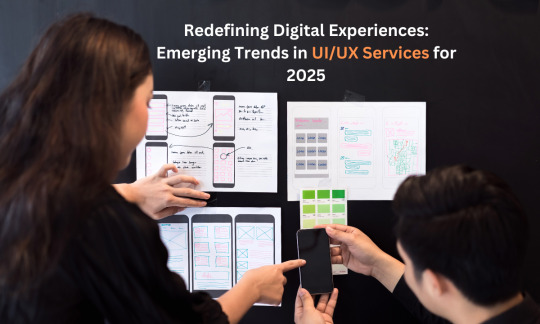
Design has become an integral part of every business. It has the power to attract attention from users, which means for businesses to stay on top, they must take their innovative design practices to the next level. UI/UX design services companies are on their mission to meet the modern needs of businesses by creating smooth, interactive and aesthetic experiences. Let’s take a look at some of the latest trends in UI/UX design services.
Latest Trends in UI/UX Designs
1. AI and Machine Learning for Personalization
To curate customised user experiences, artificial intelligence and machine learning can be extensively used. UI/UX design services companies are using two of these for the analysis of preferences, patterns, and behaviours of users, which result in the best personalized interfaces that can adapt according to the needs of individual users for increased engagement and satisfaction like never before.
2. Effective Technologies: AR, VR, and So On
The impact of augmented reality (AR) and virtual reality (VR) is getting bigger day by day in this digital world. From gaming purposes to doing virtual try-ons in retail industries, UI/UX design services companies are bringing clarity to the fact that AR and VR can connect the physical and digital worlds together.
3. Interfaces Based on Voice and Gestures
Voice and gesture-based controls are going to be the next significant step in industries like healthcare, automotive, and smart home devices. UI/UX design services companies are trying to craft interfaces that can help businesses implement hands-free interaction to increase accessibility and usability, so that they can have the flexibility to cater to a broader audience.
4. Sustainable and Ethical Design Practices
As sustainability is an inevitable factor in today’s world, UI/UX design is no exception. Creating interfaces that need fewer resources and making sure that data privacy and transparency are maintained are important.
Accepting these new trends is the only way by which UI/UX design service companies can impress their customers through factors like adaptability, sustainability and interactivity. All of these trends have resulted in a more intuitive interaction of users with all products and services they purchase. The future of UI/UX is bright, and those who invest in it today are set to lead tomorrow.
#UIUXTrends2025#DigitalExperience#UXDesign#UITechnology#FutureOfDesign#EmergingTrends#UserExperience#UIUXInnovation#DesignThinking#UXResearch#InteractiveDesign#WebDesign#MobileUX#NextGenUI#CreativeDesign#HCI#DigitalTransformation
0 notes
Text
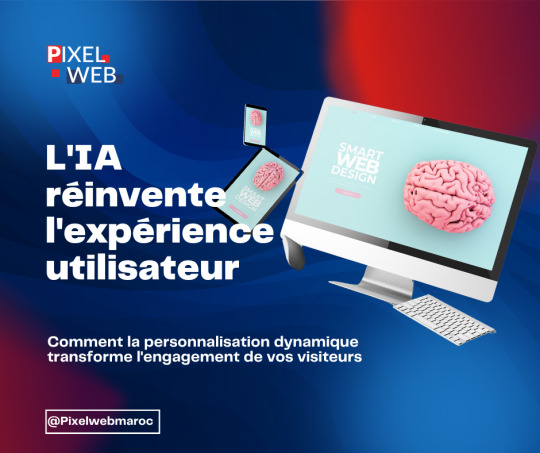
L'intelligence artificielle ne cesse de repousser les limites du web design ! 🚀
Plongez dans notre guide complet sur la personnalisation dynamique de l'UX grâce à l'IA. Transformez l'expérience de vos visiteurs et boostez vos conversions avec des techniques innovantes.
→ Personnalisation en temps réel → Analyse comportementale → Conversion optimisée → Solutions intelligentes
Découvrez comment votre site web peut devenir plus intelligent ! 🤖✨
#ux#webdesign#ai#artificialintelligence#uxdesign#webdev#userexperience#digital#tech#design#technology#future#webdevelopment#coding#development#designer#techblog#websitedesign#digitaldesign#innovation#creativecoding#designthinking#uxinsights#techtrends#futureweb#aitech#modernweb#digitalinnovation#interactivedesign
0 notes
Text
The Role of 3D Visualization in Modern Business: Enhancing Efficiency and Creativity

In the fast-paced world of modern business, 3D visualization plays a crucial role in both enhancing creativity and improving operational efficiency. Companies are using 3D models to streamline design processes, allowing for faster revisions and reduced costs. In marketing, 3D visualization is engaging customers with immersive product experiences, driving higher conversions and customer satisfaction. Businesses are also leveraging 3D visualization for training, project presentations, and collaboration. This post explores how 3D visualization is becoming an indispensable tool for driving success in the modern business landscape, Read More.
#3DVisualization#InteractiveDesign#3DModeling#ProductDesign#ArchitectureInnovation#VirtualReality#AugmentedReality#RealTimeRendering#AIinDesign#MarketingInnovation
2 notes
·
View notes
Text
Design. Animate. Inspire.
Whether it’s breathtaking visuals or engaging game mechanics, we bring imagination to reality. 💡✨
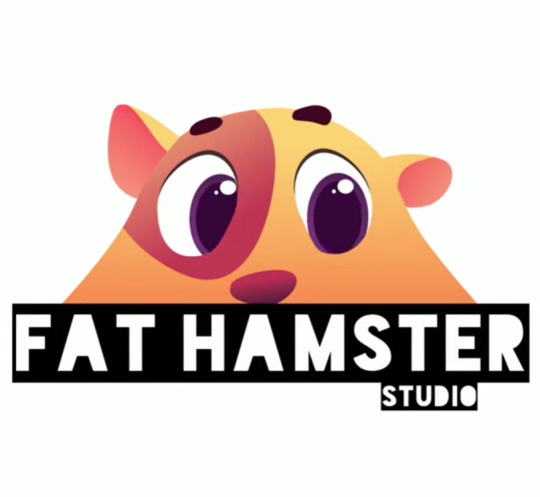
📍 Discover our creativity: https://fathamster.studio/
0 notes
Text










Check out the new product 🔥🔥 QR Code Scan and Smile
A unique t-shirt design featuring a black-and-white QR code cleverly embedded with the hidden message, “Scan for a Smile.” Surrounding the code, playful and colorful doodles of hearts, stars, and swirls add a vibrant and cheerful touch, making the design interactive and fun. This artwork blends modern tech with a lighthearted vibe, creating a conversation starter and a trendy, quirky addition to casual wear.
#scan for a smile#qr#qr code#meme#code#funny#scan#QR code#QR scanner#QR generator#QR technology#QR payment#QR marketing#QR stickers#QR menu#QR reader#QR business card#QR tracking#QR design#ScanForASmile#InteractiveDesign#QuirkyArt#TechAndFun#QRCodeTee#PlayfulDoodles#CreativeTShirt#FunFashion#HiddenMessage#CasualTrendyWear#SmileThroughArt
0 notes
Text
The B.Voc in Graphic Design at Jodhpur offers a dynamic 3-year program aimed at developing creative professionals who can excel in the ever-evolving world of graphic design. This degree program covers essential areas like typography, visual communication, digital media, branding, and interactive design, providing students with a solid foundation in both traditional and modern design techniques. Students will gain hands-on experience with industry-standard tools like Adobe Photoshop, Illustrator, and InDesign while learning the art of creating compelling designs for digital, print, and multimedia platforms. With a focus on innovation, creativity, and practical skills, this program prepares students for diverse career opportunities in advertising, publishing, digital media, and branding. The vibrant cultural environment of Jodhpur further enhances the learning experience, offering students a unique platform to hone their skills and pursue their design passions.
#BVocInGraphicDesign#GraphicDesignJodhpur#CreativeExcellence#DesignEducation#GraphicDesignProgram#TypographyDesign#VisualCommunication#DigitalDesign#BrandingDesign#InteractiveDesign#GraphicDesignDegree#CreativeProfessionals#AdobeDesignTools#DesignInnovation#GraphicDesignCareer#PrintAndDigitalDesign#MultimediaDesign#DesignYourFuture#JodhpurDesign#CreativeDesignSkills#GraphicDesignStudents
0 notes
Text
#WebsiteDesign#WebDevelopment#ResponsiveDesign#UIUXDesign#CreativeDesign#WebDesignAgency#ProfessionalWebDesign#DigitalExperience#CustomWebsites#ModernDesign#WebDesignServices#UserFriendlyDesign#OnlinePresence#GraphicAndWebDesign#InteractiveDesign
1 note
·
View note
Text
Immersion and Empathy in Immersive Technologies: Towards a Nuanced Understanding
Immersive technologies, including Virtual Reality (VR) and Augmented Reality (AR), represent a rapidly evolving field of innovation designed to simulate environments or create entirely new ones. These tools integrate sensory stimuli such as visual, auditory, and haptic feedback to envelop users in experiences that feel real or plausible. Devices such as head-mounted displays (HMDs), haptic…

View On WordPress
#ARInnovation#AugmentedReality#CognitiveEngagement#EmpathyThroughTech#EthicalTech#FutureOfLearning#ImmersionMatters#ImmersiveTech#InteractiveDesign#StorytellingInTech#TechAndPsychology#VirtualReality#VRExperience#VRForEducation
0 notes